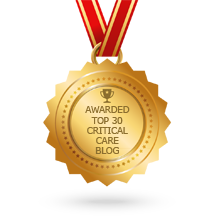 |
Answer templates. We all rely on them as memory aides, but they have their dangers. First things first …. examiners generally hate template answers. They regard them as regurgitation rather than digested and considered responses. That said, having a template helps to build an answer for a topic you might initially think that you know nothing about. The trick is then to try not to make it look like a template answer. Think of them as answer strategies rather than templates. How you use words can really help here. So, instead of talking about A.B.C.D. resuscitation, highlight key points of airway and ventilation support, haemodynamic control and neurological rescue interventions. By gum … you sound better already! |
Answer strategies for the CICM Fellowship written paper
These could be applied to any college exam, not just the CICM, though terminology may differ; e.g. CICM management question = Assessment + Treatment + Disposition, whereas ACEM management question = Treatment + Disposition +/- Administrative/departmental issues
I built up these answer strategies out of doing lots of past papers and by attending exam courses and listening to others who had a better approach.
In general, answers should be in point form.
[su_tabs]
[su_tab title=”Clinical management”]
Note: May not require all of the components listed below
Assessment
- History – features / risk factors / complications
- Examination – features / complications / +/- risk factors
- Investigations – Bedside / Lab / Imaging / Other
Resuscitation (if indicated)
- Respiratory support (A&B)
- Haemodynamic support (C)
- Neurological support (D)
- Anything else that is required to stop the patient dying
Treatment
- Specific – e.g.antidotes
- Supportive – M. F.A.S.T. H.U.G.S. or S.A.F.E P.L.O.T. or whatever mnemonic you like to use
Disposition
Theatre / interventional radiology / specialist centre / tertiary centre if not already there
Opportunity for administrative input?
Can make you look more consultoid
- Practice audit
- Quality improvement
- Education
[/su_tab]
[su_tab title=”Critically evaulate…”]
- Rationale – e.g. why was this question important to address?
- Merits (Pros)
- Limits (Cons)
- Evidence – if none or low quality then state that
- My practice – How does all of the above influence how I manage these types of patients, or, in a specific instance, how will this information influence what I do for this particular patient? (ie Tailor to context)
[/su_tab]
[su_tab title=”Device / Drug”]
I.C.P. D.O.C. E.
- Indications
- Contraindications
- Principles (Device – e.g. Wheatstone bridge, frequency & harmonics, the Haldane equation). Presentation (Drug – e.g. 5mg as 1mg/ml clear fluid in clear glass ampoule, 20mg as dry white powder to be reconstituted with sterile water to 20mls).
- Dose (Drug – mg/kg, infusion rate, etc / Device – How to set up/insert the device)
- Outcomes (Device – end points such as measurement values or therapeutic effects. Drug – pharmacodynamic effects)
- Complications
- Evidence (if available)
[/su_tab]
[su_tab title=”Adverse outcome”]
e.g. Complication of an intervention, inappropriate staff action
Recognise clinical (especially critical) and administrative components early.
Clinical management of any patient deterioration takes priority –
- Resuscitation, if required
- Prevention of further harm; e.g. cease infusion
- Manage effects of complication; e.g.pneumothorax, anaphylaxis
Administrative actions follow
- Patient and / or relatives – acknowledgement & (no fault) apology, open disclosure (explanation), arrange to follow up, provide support
- Staff – information gathering (discuss event with all parties), consider need to inform dept director, hospital management, medical defence organisation, consider need to stand down member of staff pro tempe, offer support
- Department – opportunity for Quality Improvement and education, M&M
[/su_tab]
[/su_tabs]
For more Fellowship exam advice, check out these links too:
























